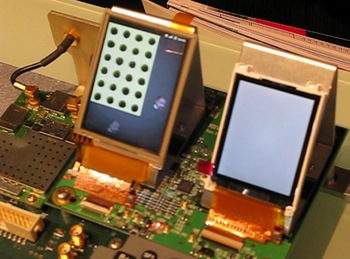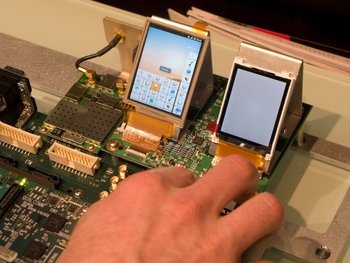 Google's mobile operating system known as Android was officially unveiled on November 5th, 2007, making today Android's 3rd birthday. It's fair to say that this mobile platform has taken the world by storm - in just a few years time, it's gone from a non-dominant player in the mobile OS market to the top smartphone platform in the U.S. and number two in the world. There are even predictions that it will overtake Nokia for the top slot worldwide by 2014.
Google's mobile operating system known as Android was officially unveiled on November 5th, 2007, making today Android's 3rd birthday. It's fair to say that this mobile platform has taken the world by storm - in just a few years time, it's gone from a non-dominant player in the mobile OS market to the top smartphone platform in the U.S. and number two in the world. There are even predictions that it will overtake Nokia for the top slot worldwide by 2014.
Let's see how it got there, shall we?
November 5th, 2007: Android Debuts
After months of speculation, Google finally squashed rumors of its so-called 'GPhone,' a direct iPhone competitor, gloriously mocked up by Internet enthusiasts to look like this:

But that was just an imaginative design. The real Android looked a lot more utilitarian when it finally debuted.
'This is the droid You're Looking For'
The famous blog post headline on November 12th, 2007 introducing Android's first SDK (software development kit) still gets repeated by bloggers today. Meanwhile, we got our first look at Android itself, thanks to a YouTube video dubbed 'Android Demo.'
Wow, That's Ugly!
After all the anticipation, Android's reveal at Mobile World Congress in February 2008 was a bit of downer. All that was on display were crude prototypes that were the antithesis of the iPhone. These weren't sleeky and sexy devices, they were science projects!


Luckily, smart journalists saw the potential:
Charlie Sorrel wrote for Wired's gadget lab: 'it's not fair to laugh at the huge circuit boards: These are design prototypes and will of course be shrunk down to a fraction of this size.' He was right.
Apps Emerge
By fall (Oct. 2008), Android apps were starting to emerge, and frankly, they looked hot. We drooled over imeem, BooRah and MySpace apps, remember?
Soon after, a company called AppLoop launched a DIY Android app generator. Today, Google has one of its own.
1.5 Cupcake
In February 2009, Android 1.1 debuted followed by 1.5 'Cupcake' in April, beginning the long list of named flavors of Android OS versions. Cupcake delivered video recording, YouTube uploads, widgets and more.
1.6 Donut
September 2009 brought Donut and with it an improved Android Market, better photo gallery and voice search, better home screen search, text-to-speech, support for CDMA/EVDO, 802.1x, VPNs, WVGA resolutions, turn-by-turn navigation and more. Oh, and some rather interesting Android skins started to appear, too.


2.0 Éclair
Éclair came out in late October 2009, to make things prettier. More screen sizes and resolutions were supported, Android got a revamped UI and browser UI, the background's contrast ratio was improved as was the virtual keyboard and the fun 'Live Wallpapers' feature was introduced. Android became more corporate-ready with Micrsoft Exchange support at this time.

2.2 Froyo
Released in May 2010, Froyo has yet to make it to all phones, but those that do have it in all its glory can enjoy USB tethering and Wi-Fi hotspot functionality, contact sharing over Bluetooth, voice dialing, Adobe Flash, support for installing apps to expandable memory, an improved app launcher and even more Exchange support, to name a few things.

Coming Soon: Gingerbread
Now we're waiting on the first Gingerbread (Android 2.3) device to be revealed. We expect to see it next week at Samsung's press event. Gingerbread will deliver WebM video playback, better social networking features and better copy-and-paste support. Rumored features include an Android Market music store, media streaming from a PC, a new UI, 3D games support, video calls, support for WebP images and Google TV support. We have our fingers crossed!
Discuss



Nenhum comentário:
Postar um comentário